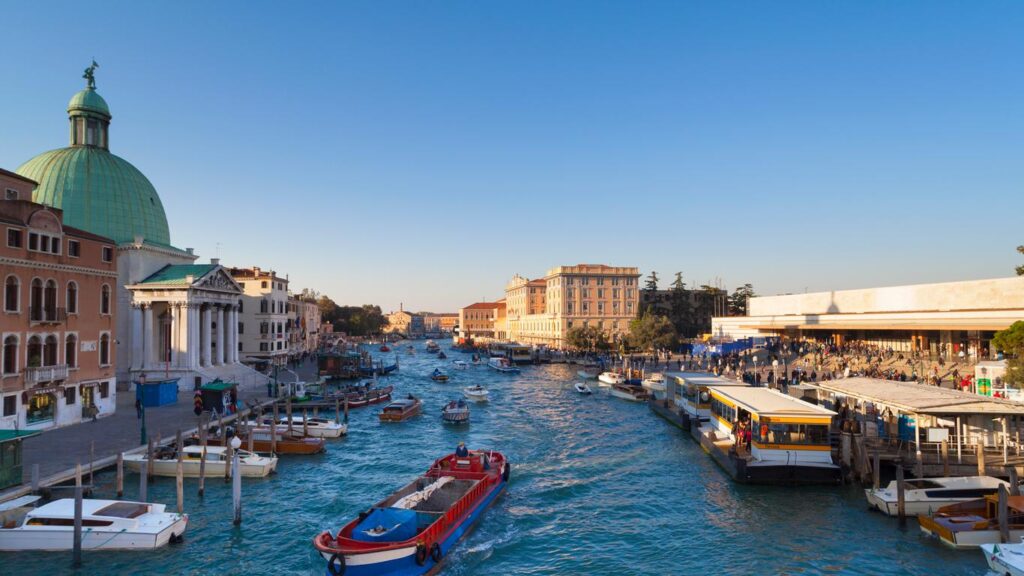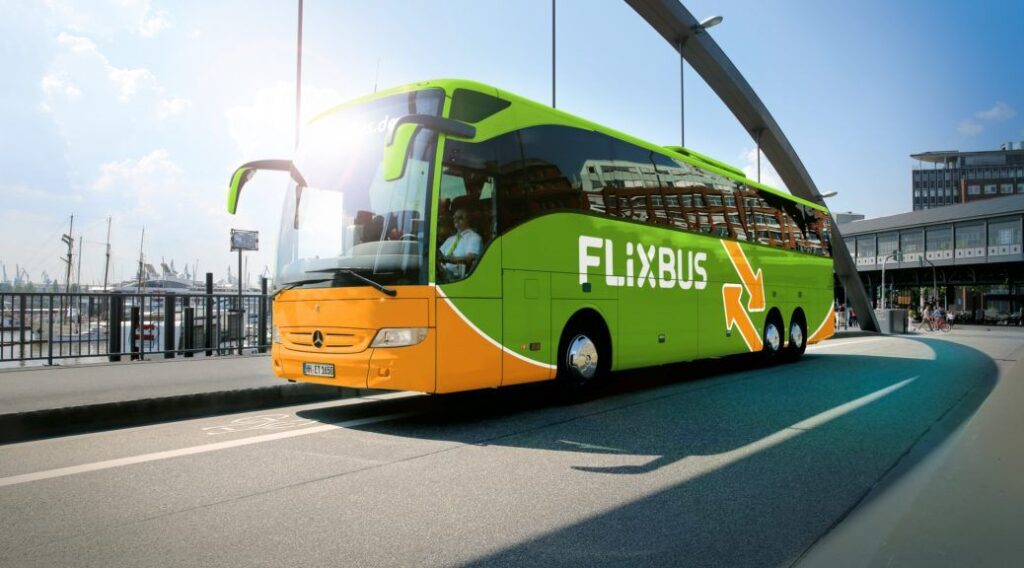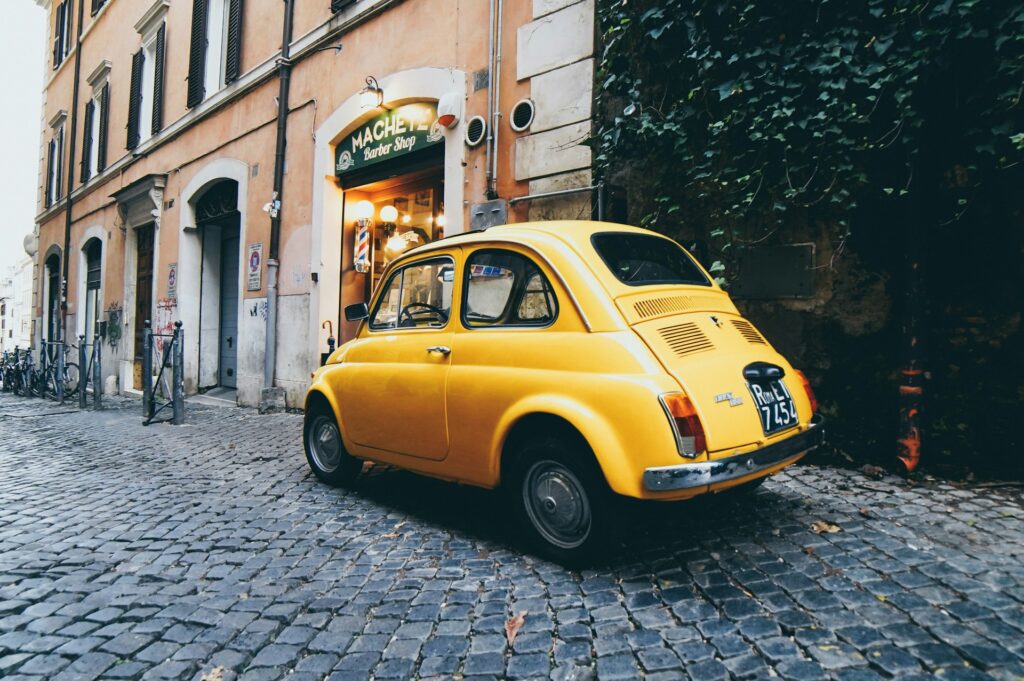Table of Contents
So you’re wrapping up your trip in Venice, the “City of Canals”, and you want to come and see our favorite city: Verona. The home of Shakespeare’s Romeo & Juliet, and long since dubbed the “City of Love”, it’s the perfect next stop on your Italian vacation. But, how are you going to get from Venice to Verona? Thankfully Italy is a country with a very robust transportation system (much more so than the United States), and getting around really isn’t much of an issue. So, let’s check out how to get you from the Venetian turf to the Veronese with the easiest ways to travel.
Need to go the other direction? Read our article on How to get from Verona to Venice.
Trains: Take the Tracks to get from Venice to Verona

Taking the train is 100% the most convenient and efficient way to travel from Venice to Verona. With few exceptions, we always take the train when traveling through Italy and Europe, and the convenience of taking a bullet train from city to city is something we dearly miss when we’re in the United States. There’s a few different train companies that have direct trips from Venice to Verona, with various options to suit your needs and budget. All trains are going to depart from the Venice Santa Lucia train station near the grand canal, and take you directly to Verona’s Porta Nouva.
- High-speed trains (Frecciarossa and ItaloTreno): These offer the fastest journey times, reaching Verona in as little as 1 hour 10 minutes with few stops. However, they are also the most expensive option, with tickets starting around €40 and reaching up to €80 depending on booking time and flexibility. These also tend to book up the fastest from tourists during peak season.
- Regional trains (Trenitalia Regionale): These are slower than high-speed trains, taking around 1 hour 50 minutes and sometimes longer, but they are significantly cheaper, with tickets starting as low as €9. Keep in mind that regional trains may have fewer amenities and make more stops along the way. These are most often used by local residents.
Booking:
Train tickets can be purchased online through the official websites of Trenitalia and ItaloTreno, or at the Santa Lucia train station in Venice. Booking online in advance is recommended, especially during peak season. Otherwise tickets can quickly sell out, or they can just be much much pricier.
Personally, I book all my trains in Italy with the Omio App. You can book on their website on a computer, or use the app to book from your phone. It let’s you sort through all trains from all carriers along a route to find the best deal or time for you, and then keeps all your tickets in the app itself. I get nothing from recommending Omio, it’s just a super convenient way to book trains, and what I always use!
Trains: Pros vs. Cons
Pros:
- By far the fastest option
- Comfortable and convenient
- Frequent departures throughout the day
- No need to worry about traffic or parking
Cons:
- Can be expensive, especially for high-speed trains depending on season
- Limited legroom on some regional trains
- Limited baggage storage
Take a Bus

Several bus companies operate between Venice and Verona, offering a budget-friendly alternative to trains. Buses are generally slower than trains, taking around 1 hour 45 minutes to 2 hours 10 minutes. Ticket prices start around €7 and can go up to €17 depending on the company and booking time. One of the nice things about taking a bus is you’ll see a bit more inside some of the cities along the way, rather than just pulling into or passing train stations which tend to be more on the outskirts of a city. Also, you can generally move more baggage on a bus if that’s important to you. Trains offer some storage for small bags, but generally not much for larger ones. That’s easier to do on a bus.
Booking:
Tickets can be purchased online through the websites of bus companies like FlixBus or at bus stations. Most buses going from Venice to Verona leave out of the Venizia Tronchetto station, but a few leave out of the Venice Mestre (Stazione FS). However, they all arrive in Verona’s Porta Nouva station (where trains also arrive).
Again, when I do take buses, I like to book them through the Omio service as well. It’s just a great all-in-one option for booking travel around Italy.
Buses: Pros vs. Cons
Pros:
- Most affordable option
- Plenty of departures throughout the day
- More luggage storage underneath the bus
Cons:
- Slower than trains
- Less comfortable than trains, and usually with less amenities like quality WiFi, etc.
- Much more limited legroom
- Traffic congestion can be worse during peak hours, so consider this if you’re on a timeline.
Rent a Car: Drive from Venice to Verona

Renting a car offers flexibility and allows you to explore the surrounding areas at your own pace when you travel from Venice to Verona. To be honest, I don’t really recommend it unless you’re planning a big road-trip throughout Italy. Verona is an extrememly walkable city, and the car will stay parked at your hotel most the time. This may be worth it if you’re dealing with small children or a lot of luggage, but otherwise probably not. So, consider the following factors before choosing this option:
- Cost: Renting a car for the journey from Venice to Verona can vary widely depending on factors such as the type of car, rental duration, and insurance coverage. On average, expect to pay between €40 to €100 per day for a standard car rental.
- Traffic: Traffic congestion can significantly increase travel time, especially during peak hours.
- Parking: Finding parking in both Venice and Verona can be challenging.
Driving Directions:
The journey by car takes approximately 1 hour 25 minutes to 2 hours, depending on traffic. Follow the A4 motorway towards Milan, taking the Verona Sud exit. Probably just punch the address into Google Maps though, rather than trying to remember the directions off of this article that you read!
Renting a Car: Pros vs. Cons
Pros:
- Flexibility and freedom to explore at your own pace
- Potential to visit other nearby destinations
Cons:
- Can be more expensive than other options, especially considering fuel and parking costs
- Traffic congestion can significantly increase travel time
- Requires navigating unfamiliar roads and dealing with parking
So what’s the BEST way to get to Verona from Venice?
In my opinion, take the train. If you have a lot of luggage, then sure, maybe a bus or renting a car is more feasible for that specific reason. But in terms of speed, cost, and comfort, I choose the train almost any time that I’m traveling from city to city in Italy. Again, going to Verona from Venice is a short and easy trip, and the trains are just the fastest way to do it. But regardless of what method you decide on to get you to the City of Love, you’re sure to have a great time. It is our favorite city in Italy, so make sure to check out a few more articles on what to do and where to go while you’re here!



